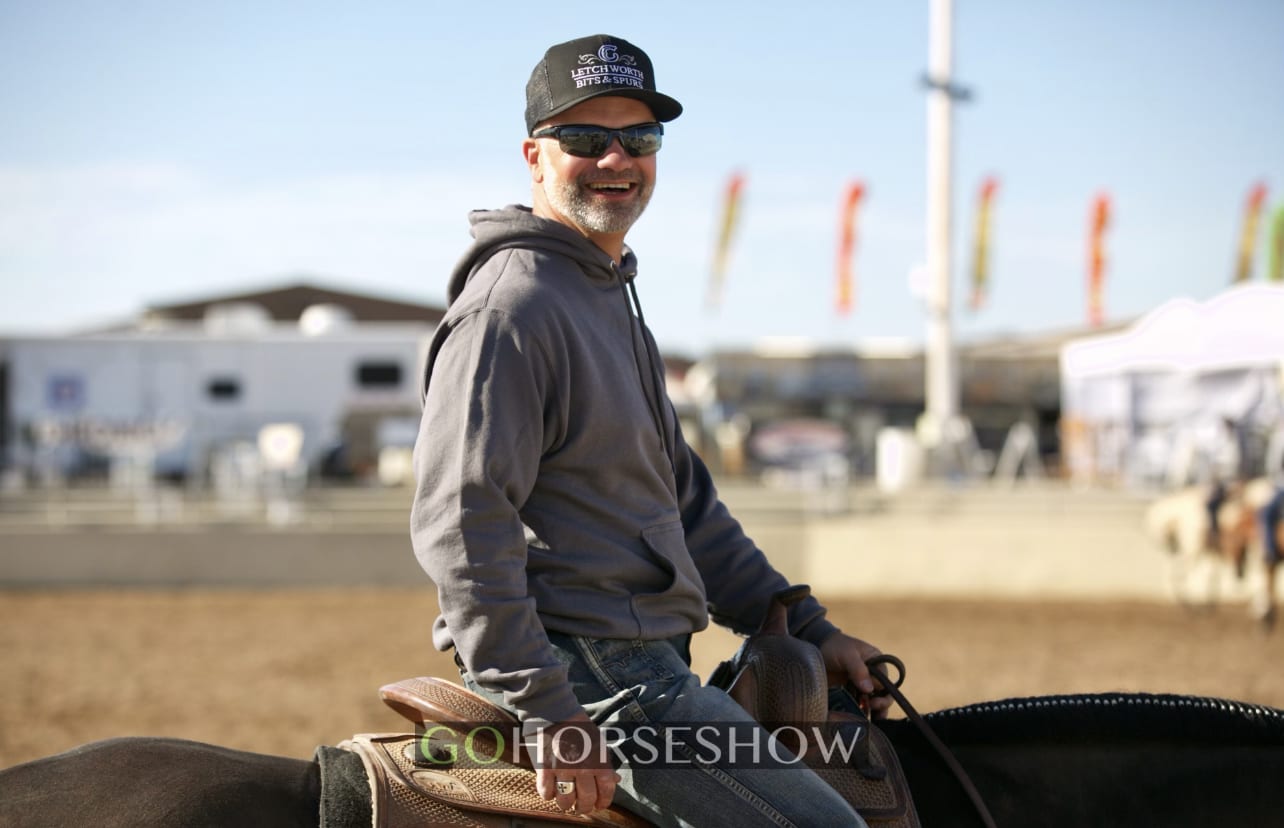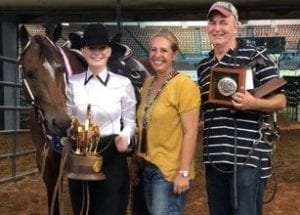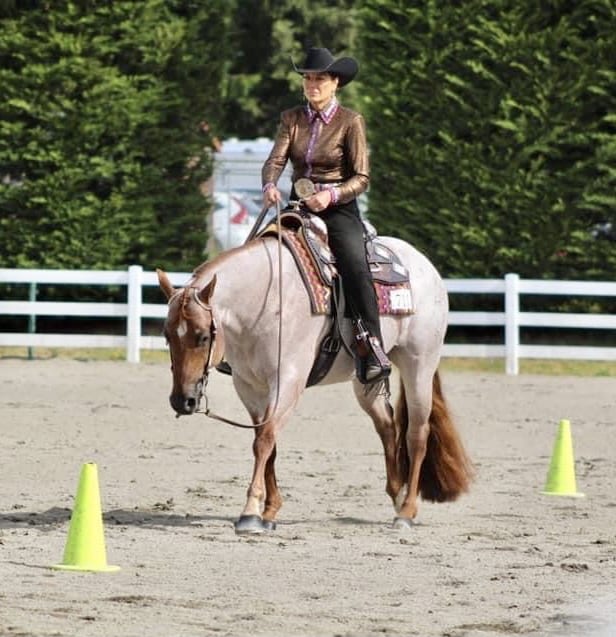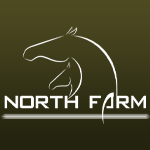The all-around events are some of the most popular events among competitors every weekend. From showmanship to western riding, competing in the all-around provides exhibitors a chance to showcase their horses’ best skills. These events also require a significant degree of fine-tuning in the horse’s training, consisting of complex patterns and challenging maneuvers.
Finished western pleasure or hunter under saddle horses often have a solid foundation as show horses and the potential to become great pattern horses, but must learn a series of “new tricks” to become a sought-after pattern machine.
GoHorseShow had the opportunity to talk with trainers Brad Jewett and Brad Kearns about the essential skills that rail horses should begin to be taught to help them become successful all-arounders.
Revisit Concepts
 When it comes to learning a new event, both Jewett and Kearns agreed that even the finished rail horse would need to revisit concepts thought of as the ‘basics.’
When it comes to learning a new event, both Jewett and Kearns agreed that even the finished rail horse would need to revisit concepts thought of as the ‘basics.’
AQHA Professional Horseman Brad Jewett explained that when he is starting the process of retraining a rail horse for the all-around events, two of the first things he addresses are the horse’s body position and steering to the bridle.
He described these first steps as a careful process of “teaching the horse, without scaring it, to step up through the bridle a little bit more.” He has found that pleasure horses are often taught to respect the bridle as a barrier, and when they are transitioned to the all-around, “they need to soften that barrier a little bit.”
Jewett continued on this line of thought: “Steering is super important,” he added, “because most of the time, the rail horses are more broke to your leg and have been trained off of the rein, so I teach them to steer off of my hand more.”
The ability to guide a horse through a complex series of maneuvers is vital to success in classes such as trail, horsemanship, or equitation. The use of the rider’s hand to aid their leg to steer is essential, and a concept that pleasure horses may not be familiar with to start.
 Kearns echoed similar sentiments, emphasizing the importance of body control to create a great all-around partner. One of his initial focuses when retraining a rail horse is to teach it “to travel in a straight line.” A horse that is used to traveling down the rail in a western pleasure or hunter under saddle class may never have been focused on mastering this skill, but it is one which Kearns believes should be valued highly in an all-around horse.
Kearns echoed similar sentiments, emphasizing the importance of body control to create a great all-around partner. One of his initial focuses when retraining a rail horse is to teach it “to travel in a straight line.” A horse that is used to traveling down the rail in a western pleasure or hunter under saddle class may never have been focused on mastering this skill, but it is one which Kearns believes should be valued highly in an all-around horse.
He expressed that a horse needs to “maintain its center of gravity to execute such maneuvers as lead changes, spins and maneuvering over trail obstacles.” A horse’s ability to maintain its center of gravity is a skill that stems from its ability to balance itself in a straight line. “A balanced horse can perform a balanced pattern,” he said.
Teach Turn Around
Building the horse’s strength and confidence in its center of gravity will lay the foundation for a rider to begin approaching more complicated maneuvers. Jewett said that after teaching the horse how to use its body outside of the rail classes, “the next most important thing is teaching that turn-around.”
The pivot, or ‘turn around,’ is a staple of horsemanship and trail classes and is occasionally seen in equitation patterns. Aside from being commonly featured in patterns, the pivot is also a great test of the rider’s control of the horse’s body and its ability to use its body differently.
Performing Alone
 Kearns also spoke of a skill that is not directly associated with the horse’s physical ability: his confidence while performing in the arena alone. While competing in rail classes, he said, there is a certain “sense of security” for the horse because they are in the company of other horses.
Kearns also spoke of a skill that is not directly associated with the horse’s physical ability: his confidence while performing in the arena alone. While competing in rail classes, he said, there is a certain “sense of security” for the horse because they are in the company of other horses.
Competing alone in a pattern class, with only the judges to accompany them in the arena, “can be intimidating for the animal.” For this reason, Kearns explained that it is essential to stimulate and train for the conditions of all-around competition and prepare for the new discipline’s physical requirements. “Practicing at home with an empty arena or practicing early in the morning or late at night to have an empty arena at the show can somewhat simulate the conditions of the show pen,” he said.
Benefits of Rail Horses
There are many benefits to transforming a rail horse into your all-around partner. A rail horse’s experience with the conditions and demands of showing in general offers a substantial advantage to create a great show partner. His training as a rail horse provides an almost essential foundation to build upon for the pattern events.
Kearns put it best, stating, “The most important things to remember when transitioning a horse into any new event are repetition and patience.” Taking time to focus on cultivating the skills of a rail horse to help him become an all-around horse will ultimately pay off in the form of a confident all-around partner.









